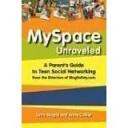 “Is MySpace always mine or can it belong to someone else?”
“Is MySpace always mine or can it belong to someone else?”
Such was the headline news last week when presidential candidate Barack Obama tried to rein in his messaging by usurping site control from an ardent supporter who had built his site up to 160,000 “friends.”
Turns out the fine lines of “friendship” can get a bit testy when folks get tweaked, whether it’s a fan club gone sour or a teen with a grudge. Since Obama had a hard time wrenching back his own name initially (outcome was a peaceful resolution via phone chat) what if we show kids how to remove imposter profiles before they ever happen and prevent all the fuss? This seems healthy to me.
Anne Collier, co-author of MySpace Unraveled, posted an excellent article using Obama’s scenario as a universal lesson for kids to keep their passwords secured, and included this amusing L.A. Times commentary on social media spam.
She emphasized that Obama’s friendly supporter created the profile and ran it for over two years before there was ever an issue. It’s noteworthy that in ‘kid-culture’ two months (or even two weeks) is akin to same; so what begins as a social favor can end as a bitter tug-o-war.
If a profile is posted by a pal, deemed okay for awhile, then the owner wants sole control, the pal’s hurt feelings can lead to spiteful password lockouts. Again, as this BlogSafety thread shows, “Imposter Profiles” are a common forum topic and kid concern.
To defuse internet hysteria perpetually skewed in the media, (though new hacker threats like this one will rightfully command attention) let’s inform ourselves first, visit blogs like MySpaceSafetyTips, and try to post solutions before there’s even a problem.
It’s like taking sailing lessons and tipping the boat over right away so the captain and crew will quit obsessing about all the “what-ifs” of capsizing.
That way, adults and kids are armed with media literacy from the get-go and can ditch the “what ifs” knowing they have a cheat sheet prepared to extricate themselves in a cyberbullying “worst case scenario.”
Using the Obama incident as a ‘red warning flag’ let’s look at how to deal with password lockouts as power plays, and “imposter sites” where kids have created MySpace accounts portraying others in less than ideal scenarios that are often completely off the radar of the namesake themselves.
First of all, reputation hijacking has been positioned as being like digital libel in a lawless frontier.
It’s stressful and destructive, but not lawless whatsoever. There are PLENTY of laws and ways to ride those folks outta town…you just need to know which sheriff to call and what posse to have on your team!
The newsletter from NetFamilyNews, the forum at BlogSafety, and the new book and blog from Totally Wired will keep you current up to the nanosecond.
Know you’re in good hands with those experts to keep you well-informed. More? There are endless resource links and law mega-data on sites like Wired Safety.
Here are 3 top tips distilled from just ONE of those resources…BlogSafety.com
1.) Don’t panic or over-react: a hysterical tizzy may be just the prompt the cyberbully is looking for.
This thread details the exact procedure to be taken to get the attention of MySpace officials: Route to the Imposter Report division specifically: imposterreport@myspace.com NOT through “your friend, Tom.”
2.) Expedite removal by using the proper protocol and routing! Trying to fudge by hoping one address will be ‘less busy’ than others will bog down the whole shebang.
Here’s BlogSafety’s inside track on MySpace contact addresses with specifics…From underage users to cyberbullying harassment, there’s a different e-mail for each.
They’re also “generously supported” by the primary players in the social networking arena so they should know the fastest avenue to snuff out a user.
BlogSafety also addresses age verification issues and software assistance for parents that MySpace created to sift the tween bluffers from the pack.
3.) Make use of forum finds to cut to the chase with insightful details. Often people have “been there, done that” and share their shortcuts!
BlogSafety’s forum has some detailed solutions and commentary from all over the board…Kids, parents, “ask a teen” helpers, forensics experts, and social networking user specifics like this one about Bebo, this one on about a hi5 hack, or this security and size edification accounting for differences in sites like Xanga, LiveJournal, Facebook, & such.
Finally, live and learn from any loopholes or oops moments, using media literacy to navigate the social web with confidence, forethought, and reason…
Despite sensationalism, studies actually show GOOD news in social media circles, even LifeLines in some cases.
As we cited before in the Pew research, the vast majority of teens with online profiles self-rein and actively manage their accounts, with 66% of them setting their online profiles to private.
As for MySpace, this Businessweek article details the teen safety upgrades, which should give worried parents some exhales.
Living in the Bay area, I liken MySpace debacles to seismic earthquake retrofits, in some ways MySpace is about the safest place kids could be on the social web right now.
In sum…
Parents? Stay in tune and in touch with your kids’ wired worlds. (most obvious ‘safety tip’ of all, get up to speed, stay informed)
Kids? Breathe. Know that adults are not the enemy, they can marshal forces to back-up your flanks, and help lasso the lawless.
Best practice from the start? Media literacy. Hands down.
And if you foul up once in awhile, remember this Carl Jung quote,
“Knowledge rests not upon truth alone, but upon error also.”








Speak Your Mind